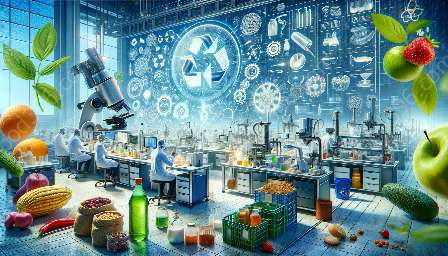Food safety and hygiene play a crucial role in ensuring the quality and safety of food products. In this article, we will explore the concepts of food safety and hygiene, their relevance to food quality control, and their impact on food science and technology. We will delve into best practices and regulatory standards to maintain the highest standards of food safety and hygiene in the food industry.
The Importance of Food Safety and Hygiene
Food safety refers to the handling, preparation, and storage of food in ways that prevent foodborne illnesses. Hygiene, on the other hand, involves practices that help to maintain a clean and safe environment for food preparation and handling. Both are essential to ensure that the food we consume is free from contaminants, pathogens, and other hazards.
Connection to Food Quality Control
Food safety and hygiene are intricately linked to food quality control. Quality control measures aim to ensure that food products meet specific standards and are safe for consumption. Without proper attention to food safety and hygiene, it is challenging to maintain the desired quality of food products. Contaminated or improperly handled food can lead to quality issues and pose health risks to consumers.
Impact on Food Science and Technology
Advancements in food science and technology have significantly contributed to improving food safety and hygiene. From innovative packaging materials that extend shelf life to rapid methods for detecting foodborne pathogens, these developments have transformed the way we approach food safety. Moreover, technological solutions help in monitoring and maintaining hygiene standards in food processing facilities, reducing the risk of contamination and ensuring the safety of the final products.
Best Practices for Food Safety and Hygiene
Implementing best practices for food safety and hygiene is critical for the food industry to uphold quality control and meet regulatory requirements. Some key practices include:
- Regular training of food handlers on hygiene practices and proper food handling techniques.
- Strict adherence to cleaning and sanitization protocols in food processing and storage areas.
- Monitoring and controlling temperatures during food storage and transportation to prevent bacterial growth.
- Implementing Hazard Analysis and Critical Control Points (HACCP) principles to identify and address potential hazards at various stages of food production.
- Engaging in regular food safety audits and inspections to identify areas for improvement.
Regulatory Standards and Compliance
Food safety and hygiene are governed by a wide range of regulatory standards and compliance requirements. Government agencies, such as the Food and Drug Administration (FDA) in the United States and the European Food Safety Authority (EFSA) in Europe, have established guidelines and regulations to ensure the safety of food products. It is imperative for food producers and processors to stay abreast of these standards and comply with them to maintain the trust and confidence of consumers.
Conclusion
Food safety and hygiene are integral aspects of food quality control and food science and technology. By prioritizing these elements, the food industry can deliver products that are not only of high quality but also safe for consumption. Embracing best practices and compliance with regulatory standards will continue to be essential for fostering trust and ensuring the well-being of consumers in the dynamic landscape of the food industry.

